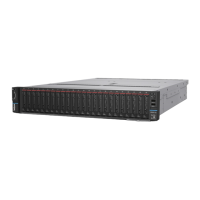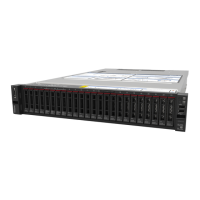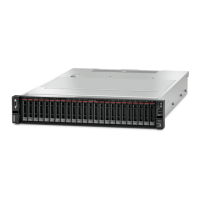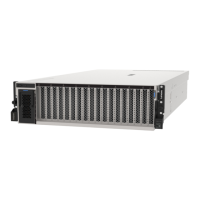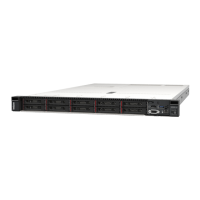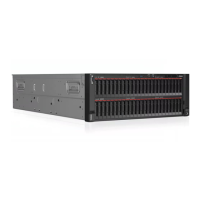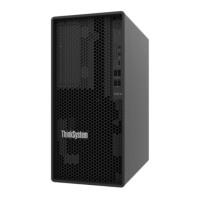• Prevent exposure to static electricity, which might lead to system halt and loss of data, by keeping static-
sensitive components in their static-protective packages until installation, and handling these devices with
an electrostatic-discharge wrist strap or other grounding system.
A video for this task is available at:
• Youtube:
https://www.youtube.com/playlist?list=PLYV5R7hVcs-DqVplE36HIvdM_sq_Auw3U
• Youku: https://list.youku.com/albumlist/show/id_59643657.html
Procedure
Step 1. Touch the static-protective package that contains the drive to any unpainted surface on the outside
of the server. Then, take the drive out of the package and place it on a static-protective surface.
Step 2. Install the drive in the drive bay.
a. Ensure that the drive tray handle is in the open position. Slide the drive into the drive bay until it
snaps into position.
b. Close the drive tray handle to lock the drive in place.
Figure 176. 2.5-inch hot-swap drive
Figure 177. 3.5-inch hot-swap drive
Step 3. Check the drive status LED to verify that the drive is operating correctly.
a. If the yellow drive status LED is lit continuously, that drive is faulty and must be replaced.
b. If the green drive activity LED is flashing, the drive is being accessed.
Step 4. Continue to install additional hot-swap drives if necessary.
After you finish
1. Reinstall the security bezel if you have removed it. See “Install the security bezel” on page 352.
2. Use the Lenovo XClarity Provisioning Manager V3 to configure the RAID if necessary. For more
information, see:
https://sysmgt.lenovofiles.com/help/topic/lxpm_frontend/lxpm_v3_about.html
228 ThinkSystem SR650 V2Maintenance Manual
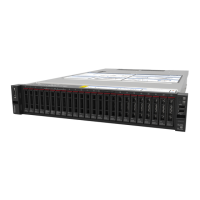
